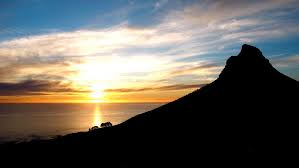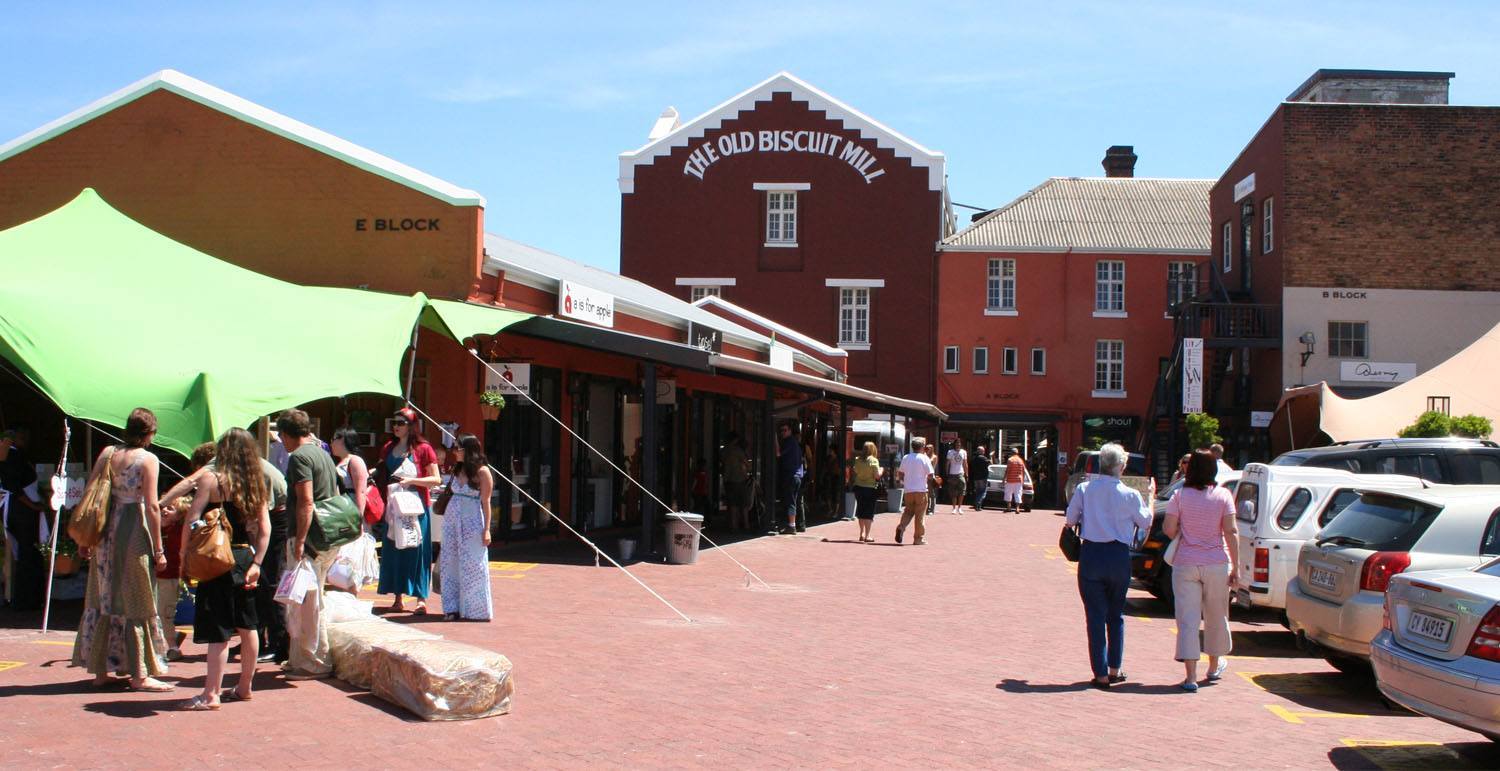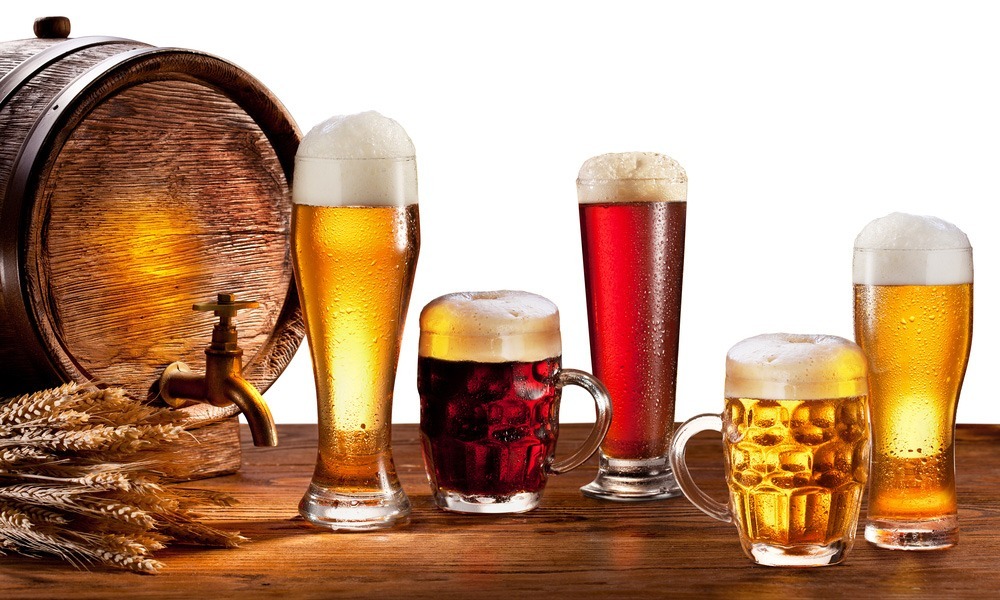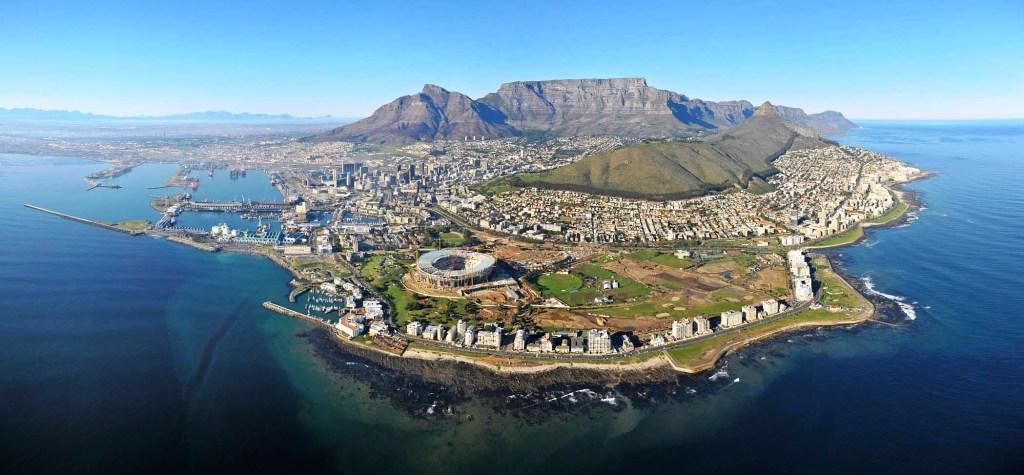The post #100 – Sundowners on Lion’s Head appeared first on Stoogle.
]]>
Being a UCT student, there are few things that you learn to love when you are in Cape Town. One of them is most definitely the landscape. Cape Town has one of the most beautiful landscape set ups in South Africa (or quite possibly the world). Lions Head, being one of the many hikes you can do, is by far one of the best!
Lions head is located directly between the heart of the city and Camps Bay and provides a stunning view of almost all of Cape Town. To the North, you can make out a small piece of land that is Robben Island. To the Northeast lies the harbour and the buzzing V&A Waterfront. To the East lies the beautiful heart of Cape Town city radiating with warmth. To the Southeast looms the beautiful Table Mountain seemingly about to break like a wave on the city. To the South lies the wealthy suburb of Camp’s Bay and Western edge of Table Mountain which is known as the 12 Apostles (if you count the number of crests down the Western edge there should be 12). To the West is a spectacular view of the sunset as the Southern Atlantic Ocean engulfs the sun. During the day the view is magnificent, but at night it iss on a whole new level as you stare in awe at millions of lights that light up the beautiful city.
Cost: Free
What to bring: Warmish clothes (but clothes you can still hike in), water, picnic blanket, snacks, a bottle of wine or champagne, head torch (absolutely crucial if you do the sunset hike)
Starting Location: Signal Hill Road which is just off Kloof Nek Road
Duration of Hike: 50min at a relaxed pace
Parking: Yes (Just off Signal Hill Road)
So here’s the plan. If you’re bored one evening and are looking for something exciting to do, grab a couple of friends and head over to Lion’s Head for sun downers. It is a 10min drive from the Cape Town Southern Suburbs and it is literally an amazing experience and a definite must do!! (When hiking back down, take it very slow and ensure that everyone has a head torch)
Note: If you enjoyed the sunset hike, have a look at the Full Moon Hike up Lion’s Head, it’s also a must do!!
The post #100 – Sundowners on Lion’s Head appeared first on Stoogle.
]]>The post Introduction – for the Parents appeared first on Stoogle.
]]>
Change is afoot and, as a parent, your role is both crucial and under-appreciated – as expected. As your child enters high school or university, so come the underlying pressures for the NEXT STEP!
Top of mind for many is the following:
What is the school of choice for university entrance?
Is your child doing the necessary courses at school for entrance into university?
Choose carefully… Although his or her friends may joke about struggling to get through Afrikaans, for instance, as a parent you should know that any failed course, will result in a rejection at university right at the outset of applying- no laughing matter mid-way through your matric year!
The subjects-decision in Grade 9, on a Maths teacher’s recommendation that your child do Math Literacy from Grade 10, can lead to an easier high school process but also to disappointments in Grade 12 when your child is excluded from a number of courses at University. A lot can change in your child’s expectations between Grades 9 and 12, so tread carefully.
All this before you or your child have even given any real thought to his/her future! But this is why you are the parent in your child’s life: to provide the stability and guidance through a proverbial minefield of accumulated decisions, when you yourself are probably unclear of the way forward.
Decisions include material information such as what courses to take at High School level, to Financial decisions and less obviously, but no less importantly, emotional back up and support.
This section is aimed at parents, guardians and care givers alike.
As we continue through this adventure next to our children, remember:
1) You are there to give guidance and stability in changing times.
2) Stay calm in the face of anxiety.
3) Be positive and realistic about tertiary education but foster self-confidence.
4) Know the deadlines and guidelines for the relevant institutions.
5) Be flexible and expect changes in your child once they enter higher education.
At the end of the day we, as parents, are looking for the same thing: To assist our children in the best choices possible.
The post Introduction – for the Parents appeared first on Stoogle.
]]>The post #102 The Old Biscuit Mill appeared first on Stoogle.
]]>
The post #102 The Old Biscuit Mill appeared first on Stoogle.
]]>The post Universities Going Green appeared first on Stoogle.
]]>
The Constitution states that ‘Everyone has the right to an environment that is not harmful to their health or well-being; and to have the environment protected for the benefit of present and future generations…’ With every right comes a responsibility and it is the responsibility of students to protect the environment for future generations.
There are a myriad of ways in which students can make a positive impact on the environment. The focus however needs to be on creating sustainable economic development and decreasing our environmental footprint.
The Department of Environmental Affairs’ stated goal is to establish a ‘sustainable economically prosperous and self-reliant nation… by managing its ecological resources responsibly…’ How can students be part of this? Renewable energy is a relatively new and exciting field for students to study and conduct research in.
Given South Africa’s energy shortages, renewable energy is a great way for South African students to tackle one of South Africa’s strategic weaknesses and conserve the environment at the same time. The Centre for Renewable and Sustainable Energy Studies (CRSES) at Stellenbosch University is one example of South African students getting involved with the environment. The South African Renewable Energy Technology Centre (SARETEC) and the Cape Peninsula University of Technology (CPUT) is another. Science and engineering offer students the opportunity to create original solutions to problems specific to South Africa.
There are also ways to make a positive impact on the environment without a science or an engineering degree. There are plenty of ways that individual students can get involved and make a difference by reducing their environmental foot print.
Recycling is one of the simplest but most important means of conserving the environment. Rhodes University is running a great recycling initiative that employs previously disadvantaged people – the Masihlule Project. This project both protects the environment and uplifts those in greatest need.
Alternative means of transport help to solve the problems of carbon emissions from vehicles, congestion on the roads and parking shortages on campus. UCT’s Green Campus Initiative launched RideLink, a car pooling system to reduce the number of single-person car usage. It uses UCT’s Vula online system to connect potential car pooling buddies. BikeLink is the complimentary programme to make UCT’s campus friendlier to cyclists.
It’s awesome to see SA universities doing their part for the environment. How is your university going green? Comment below and share your story!
The post Universities Going Green appeared first on Stoogle.
]]>The post How Leaders Get Lucky appeared first on Stoogle.
]]>Leadership is the adorned quality of the modern age. These leaders are the bright-eyed, ‘out-there’individuals with big ideas and far too much energy, and they run the world. They are in many aspects all we wish to be- they are confident, clever and quirky, and they have an unparalleled zest for life- and yet too often our quest for leadership greatness is restricted by fear, confusion and laziness. Anyone who possesses a true and deep desire to become a great leader in the world will know each of these restrictions in regrettable detail, and anyone who has surpassed them will recognise that they are mere hurdles, disguised as brick walls.
In full confidence I relay that leadership is an overwhelmingly uplifting quality in itself- leaders feel empowered and motivated purely because they are leaders, manifesting in a self-fulfilling cycle. More to the point, leadership as a quality is every bit as enviable as it is made out to be, perhaps more so. So we’ve got to chase it, we’ve got to seek out every bit of motivation we can find so that we may one day be the ones giving it!
Leaders seem to have everything cut out for them. Opportunities fall in their laps, money is thrown their way and people hang onto their every word! THIS IS NOT LUCK. It’s a state of the mind that attracts prosperity. Intuition should be sufficient to prove the truth of this. If you were to make a decision right now to simply ‘be awesome’; if you were to sit bolt upright, open your eyes wide and do whatever it is you do with gusto and an inner sense of certainty, I would not believe you if you told me you weren’t luckier that day than any other. Luck is a non-existent phenomenon to the true leader, who works to build a dream, and is eager to get up in the morning and live that dream.
This piece would bear gaps without mention of Gary Player, with his famous statement‘The more I practise, the luckier I get’. Work with unequalled determination, in pursuit of an objective you want more desperately than tomorrow, and you will find yourself luckier and luckier every day.
The post How Leaders Get Lucky appeared first on Stoogle.
]]>The post Beer, the Reason for All Civilisation? appeared first on Stoogle.
]]>
There’s nothing quite like that cool, crisp and refreshing taste of an ice-cold lager or foamy ale. We all know that, but here’s something you didn’t know about beer…
It may just be the reason for all civilization. Sound like a joke? Well, only partly- 12 000 years ago, the very first and rather crude version of what we now know as beer was made. The story goes that a loaf of bread was left outside in the rain for some time. The yeast in the bread digested the grains, and the result was a crude mead. The following few millennia saw a previously-nomadic world population begin to settle down to cultivate grains for eating and fermenting.
Though I can’t see many people nowadays knocking back a pint of wet bread, it’s certainly prudent to acknowledge this historic moment with respect! This was the birth of SAB, of Black Label (all too well known by the student population), and of the myriad of microbreweries which churn out our favorite session beers.
South Africa has gone craft-beer-crazy in recent years. Darling Breweries, CBC, and Devil’s Peak Brewery in the Western Cape, Black Horse, Gilroy’s and Copper Lake in Gauteng and Shongweni and Nottingham Road Breweries in KZN are leading the way, and dozens more are chasing their tails. To get a taste of the revolution, all you have to do is pick up a CBC Amber Weiss, a Devil’s Peak Blockhouse, or my personal favourite- Darling Brewery’s Bonecrusher.
On a recent trip to the Spice Route in Paarl, WC, the Stoogle Team went wild in CBC’s beer tasting room. From the classic Pilsner to the unconventional Krystal Weiss, we had it all. For those at UCT, Stellies, UWC and Varsity College, the Spice Route is just a 30 minute drive from Cape Town and is an epic weekend social. CBC’s brewery is situated on the Spice Route estate, and you can do chocolate, coffee, wine, cheese and biltong tasting too!
Speak the lingo:
- Blonde - Often aromatic and fruity-tasting
- Saison - Seasonal beers for the summer, but available all year round. It was once a poor-man’s blend of several beers, designed to be a thirst-quencher for local farm workers.
- Wit - This style is usually made from equal portions of raw wheat and malted barley, spiced with ground coriander seeds and dried orange peels.
- Pale Ales - Traditionally golden to copper in colour, pale ales have low to medium maltiness, with English hop varieties providing flavour and bitterness. Pale ales are not really “pale”. The term was originally used to distinguish these ales from porters and stouts.
- Ale - A beer made with top-fermenting yeast that is fermented at warmer temperatures and many times served at a warmer temperature.
- Draught beer - Beer drawn from kegs rather than from cans or bottles.
- India Pale Ale or IPA - A beer style in the pale ale category from England of the 19th Century with a more bitter taste due to the hops used.
- Lager - A beer fermented at cooler temperatures creating a “cleaner” taste allowing the malt and hops to shine through.
- Malt - Processed barley that has been steeped in water and germinated for the purpose of converting the insoluble starch in barley to the soluble sugars in malt.
- Pilsner - A pale lager from the city of Pilsen, Czech Republic that is from straw to golden in color and has a more bitter, earthy taste.
- Stout - A dark beer of roasted malt, barley or hops usually with a higher percentage of alcohol.
The post Beer, the Reason for All Civilisation? appeared first on Stoogle.
]]>The post 101 Things To Do In Cape Town appeared first on Stoogle.
]]>
This semester at UCT has been particularly tough for me and it is not entirely because of the work load. Don’t get me wrong, studying Business Science Finance is very challenging and one shouldn’t take it lightly but studying it in Cape Town is a whole new challenge on its own. This number of distractions are unlimited!
I came home one day and it was still quite early in the day. Not being one of those people who sets about on their normal routine of writing out notes for that particular day’s lectures, I looked for more exciting prospects. While contemplating on what to do, I stumbled upon this list of 101 Things To Do In Cape Town. It has proven to be one of the best and one of the worst discoveries that I have ever made. Since then, I have made it my mission to accomplish everything on this list. I have only deliberately accomplished about a two dozen items of the list, each one being a unique experience that I have thoroughly enjoyed.
If you have a love of adventure like me and have a lot of time on your hands, or not so much in my case, come and experience some of the best things Cape Town has to offer!
Here’s the list:
1. Enjoy a traditional braai with your hosts at Afton Grove
2. Visit Cape Point, where 2 oceans meet
3. Enjoy a romantic picnic at nearby Cape Point Vineyards
4. Visit Noordhoek Farm Village
5. Dinner at the Cape Town Fish Market, Steenberg (fresh fish & sushi)
6. Walk to Chapman’s Peak from Silvermine nature reserve
7. Boat cruise from Hout Bay to see Cape Fur Seals
8. Eat with renowned chef Frank Dangeraux at the Food Barn , Noordhoek cooking demonstration on Wednesdays
9. Swimming at Fish Hoek Beach
10. Bird & Hippo watching at Rondevlei
11. Visit the Simon’s Town Waterfront
12. Surf at Long Beach, Noordhoek
13. Catch crayfish at Kommetjie (in season)
14. Watch the trek fisherman at Fish Hoek Beach
15. Seafood lunch at Chapman’s Peak Hotel
16. Deep sea fishing for tuna from Simonstown
17. Take a 7km beach walk on Noordhoek beach
18. Camel riding at Imhoff’s Gift
19. Walk in the arboretum at Tokai
20. Swim with African Penguins at Boulders Beach
21. Take a “Topless bus tour” of the Peninsula
22. Sunset beach ride on Noordhoek beach
23. Pick mussels from the rocks at low tide at Scarborough
24. Abseil from Chapman’s Peak
25. Open air summer concert at Kirstenbosch
26. Whale watching from False Bay coastline
27. Visit Groot Constantia historic wine estate & picnic under the oaks
28. Walk up Table Mountain (there are many routes)
29. Dine at La Colombe Restaurant, Constantia (top restaurant in South Africa – booking essential)
30. Sea birdwatching at Kommetjie
31. Fynbos walk at Cape Point Nature Reserve
32. Harbour House Restaurant – watch the waves crashing onto the floodlit rocks below, whilst enjoying seafood
33. Play 18 holes of golf at Clovelly Country Club
34. Take a yacht charter from the V&A waterfront
35. Visit the toy museum at Simon’s Town
36. Walk in the Bo-Kaap area above Cape Town
37. Shopping at the V&A Waterfront
38. Visit the gemstone factory and scratch patch near Simon’s Town
39. Scuba Diving in False Bay marine reserve
40. Visit the VOC Castle in Cape Town
41. Body surf at Muizenburg
42. Visit the “old-worlde” fishing harbour at Kalk Bay
43. Walk in nearby Tokai forest
44. Take a 3hr trip & tour to Robben Island (pre-booking essential
45. Visit Masiphumelele informal settlement
46. Walk to historic stone-age cave site – Peer’s Cave in Fish Hoek
47. Golf at Simon’s Town
48. Dinner at Mariner’s Wharf in SA’s original Waterfront, Hout Bay
49. Scenic coastal train ride from Muizenberg to Simon’s Town
50. Swim at St. James tidal pool
51. Tennis at Clovelly
52. Birdwatching at Cape Flats Wastewater Plant (Flamingos a highlight!)
53. Visit Windmill Beach, one of False Bays secret hideaways.
54. Lunch at River Cafe, Uitsig, Constantia
55. Cycle tour of Cape Point
56. Visit the Simon’s Town Maritime Museum
57. Thursday evening at Cafe Roux, Noordhoek – braai/potjie plus live music.
58. Visit Noordhoek artists by appointment
59. Go caving in the Kalk Bay Mountains
60. Walk up Elsie’s Peak, Fish Hoek
61. Snorkelling off Sunnycove, Fish Hoek
62. Visit Sandy Bay (nudist beach) via Llandudno
63. Spend the morning enjoying the sparkling pool at Afton Grove
64. Evening at the Theatre on the Bay, Camps Bay
65. Visit the antique route at Kalk Bay
66. Walk in Kirstenbosch Gardens
67. Visit Hout Bay’s lively working harbour
68. Evening at the “Toad in the Village” pub and restaurant, Noordhoek
69. Fine dining at Catharina’s, Steenberg Wine Estate
70. Search for Knysna Warbler at Constantia Greenbelts.
71. Walk along the Jagger walk between Fish Hoek and Sunny Cove
72. Rock angling at Rooikrans, Cape of Good Hope
73. Visit the fascinating Two Oceans Aquarium, V&A Waterfront
74. Shop till you drop at Cavendish Square, Claremont
75. Finest coffee & fresh baked cake at the Easy Dig Cafe
76. Visit Butterfly World
77. Enjoy tea under the oaks at Noordhoek Farm Village
78. Touch the cheetahs at Spier Wine Estate
79. Ballet at Artscape theater
80. World of Birds, Hout Bay
81. Visit the Reptile park at Kommetjie
82. Sea Kayak from Simon’s Town to Boulders Beach
83. Indoor Karting at Kenilworth race track
84. Moyo dining and cultural experience at Spier
85. Visit the Ostrich farm at Cape Point
86. Do the “four museum walk” through the heart of Cape Town
87. Stargaze at Cape Town’s Planetarium
88. Visit the crocodile farm near Paarl
89. Wine tasting along the nearby Constantia Wine Route
90. Walk up to Just Nuisance grave in Simon’s Town
91. Take a helicopter flip around the Peninsula
92. Shopping at Greenmarket Square – local arts and clothing
93. Great White Shark safari from Simon’s Town Harbour
94. Take a ride on a night train from Spier Wine Estate
95. Guided hike with Mike Wakeford on Table Mountain
96. Maynardville / Spier / Oude Libertas open-air concerts at night
97. A favourite – 6 course lunch at Boschendal, Franschoek (booking essential)
98. Horse ride on Noordhoek beach
99. Walk to the waterfall at Silvermine – take a cold shower
100. Sundowners on Cape Town’s Lions Head
101. Traditional Cape Malay dinner with your hosts at Afton Grove
The post 101 Things To Do In Cape Town appeared first on Stoogle.
]]>The post Daily Doses of Inspiration appeared first on Stoogle.
]]>Success is a path not void of hurdles or depressions. Though success in itself is irreconcilable by the measures different people employ, any truly admissible action to culminate in what any one of us may call ‘success’ is one that was intentional. And when one embarks on a task with intent, it is only difficulty that remains inevitable.
Personal experience has wrought firm this notion that setbacks simply happen. Whether cognitively distinguishable or emotionally induced is immaterial, yet so often we treat the former as a challenge, and the latter as an irresolvable, blameless state of affairs. For clarity’s sake, a ‘cognitively distinguishable’ setback may for example evolve from the fall-through of a major business deal. The setback often leaves us angered or frustrated, stressed. But the following day we get up, we make our coffee, we drive to work and we rationally and pointedly solve the problem… We take the setback on as a challenge, and we do what needs to be done.
The latter is a phenomenon sometimes justifiable by way of explanation, and other times just not. Sometimes as entrepreneurs, we face inexplicable emotional slumps, and they linger to the point where much of our hard work is lost to time. Then comes a discernible moment which lifts the mood and redirects our energy. This is what Steven Covey, in his best-selling book “The 7 Habits of Highly Effective People” terms a dose of motivation.
Recognising the existence of motivational material, circumstances or presences is a starting point. Whatever it is that draws one’s energies toward a more noble intention than flipping television channels is their means of motivation (see ‘drug of choice’). What follows is acceptance that setbacks happen- as above, sometimes cognitively distinguishable and others emotionally induced. Why this happens is of no consequence, so long as it is recognised and addressed. Then the link…
Literature to date rings unanimously on the optimal course of retracking- exploit motivational resources, whatever may work for you. The consensus is that slumps are rectified by motivation, and of course this is both logically and intuitively correct. Better yet, though to my knowledge unpublished/uninvestigated, is that sufficient quantity coupled with appropriate form or variety may in near-totality render ‘slumps’ non-existent. It is my belief, through research insofar as experience, that disciplined habit involving regular doses of inspiration can eliminate detrimental setback symptoms, and help further business and life objectives in generous measures. Attempts to discredit this always seem to in fact prove the fact- deviation from a daily motivational dose routine concludes itself in inevitable slumps.
Bottom line? Take your daily dose of motivation and avoid objective-threatening setback symptoms.
The post Daily Doses of Inspiration appeared first on Stoogle.
]]>The post Abridged Business Philosophy appeared first on Stoogle.
]]>
This is my take on business and wealth creation, an ‘abridged’ version of my business philosophy…
If you can live the lifestyle you want without having to work at all, then you are wealthy. Investments provide passive income, and as such can make their owners truly wealthy. So, one must manage income such that provisions are available to spend on investments that provide passive income.
Income can initially come from two places- a job or a business. If you have a job, then you need to allocate a significant portion of your monthly salary to buying investments. If you own a business, you need the business to churn out cash for you to invest. Of these options, I recommend starting a business: Your time is limited to 24 hours a day in a job, so your income is capped to whatever you can do in 24 hours. If you own a business, however, your time is unlimited, as you can employ others and start multiple businesses to work for you. The key is to recognize that your salary, or profit that your business generates, is not for you to spend! The money your job or business makes is the resource that can be used to generate wealth, and so needs to be allocated wisely.
Saving is the starting point. The minute you receive any income, take a fixed proportion of it and put it in a savings account. If you can only afford to save a small portion of your total income, that is fine, provided you only spend what is left after saving, rather than saving what is left after spending (as per Warren Buffet’s popular maxim). When plausible, make investments with your savings. Turn cash into return-generating assets such as property, stocks and bonds. Over time, you will build up a portfolio of investments that generate returns in the form of cashflows into your bank account. Because this is income, a portion should be set aside in a savings account and earmarked for investment, as above, which in turn builds your investment portfolio even further. The rest is your ‘disposable’ income, to be spent on living life.
It is only when the cashflows from your investment portfolio are large enough and frequent enough to finance your desired lifestyle that you can consider yourself truly wealthy. Of course, there are many more things to consider when following this philosophy on wealth creation, such as what investments to buy, what the most efficient way is to invest and how to build cash-generating businesses. Each of these topics is a discussion on its own, and I will touch on them in posts to come. The bottom line is that one needs to find a job or build a business that generates as much income as possible, then save more of this income than spend, and finally turn savings into cash-generating assets, commonly known as investments. The income generated from assets should also be allocated between both savings and spending, as this helps to grow passive income even faster.
My suggestion is to start by doing the following:
- Educate yourself. Read books and papers, and do research. Learn the language of finance. Teach yourself how to start and build businesses to generate income. Discover the world of investing, and learn how to make good, cash-generating investments. Learn how to read financial statements, and do away with any fears you may have of money. Money can do good just as well as it can do harm, and understanding it is key to doing good with it.
- Save. Use what you have learned to start a business, which should be treated to all extents and purposes as a cash-generating machine, or start saving a good proportion of your salary. Be sure to never touch your savings, as this is your window to investing and becoming wealthy.
- Invest. Into assets that you know will make you wealthy over the long term.
The post Abridged Business Philosophy appeared first on Stoogle.
]]>The post True Entrepreneurs appeared first on Stoogle.
]]>I recently spoke at an entrepreneurship seminar in Kwa-Zulu Natal. The event went off quite well, and I think the substance of the seminar deserves further mention.
The ultimate message in my piece was that an entrepreneur is not someone who has an idea, nor is it someone who owns his own business- A true entrepreneur is someone who acts on an idea, and goes the whole way through with it. This is so painfully simple and yet so important. Even surrounded by a thousand people, a real entrepreneur would have little problem with relaying his ten best ideas in great detail! The reason? He knows no one will actually take action on them!
We all have good ideas, and we all recognize opportunity, but for some reason very few of us put nose to the grindstone and turn an idea into reality. Entrepreneurs are very rarely geniuses, they rarely have better ideas than anyone else, and in most cases they make their money from other people’s ideas! All they do is take action.
*Wanting to take action but don’t know where to begin? See the article Your First Startup.
The post True Entrepreneurs appeared first on Stoogle.
]]>